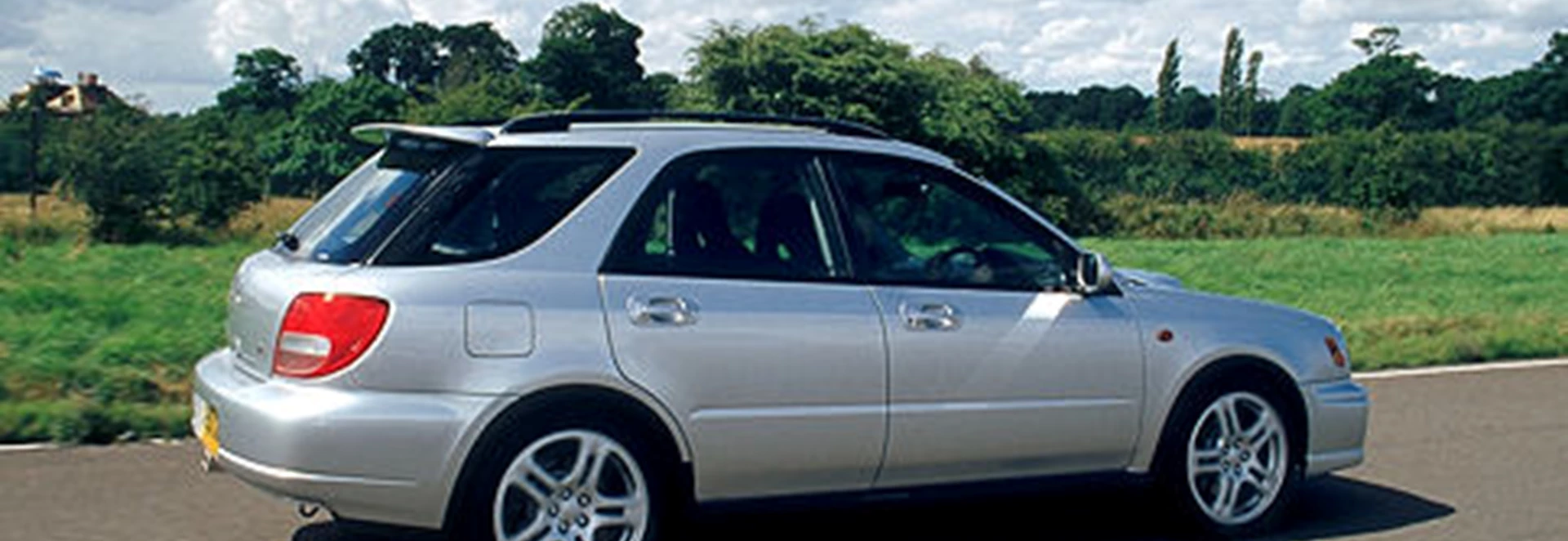The arrival of an Impreza at the CARkeys office was eagerly anticipated by myself and, inevitably, by The Lads, who can quote facts and figures by the ream about what in its earlier form was undoubtedly one of the top performance saloon cars of the 1990s.For most people of their ilk an Impreza isn't really an Impreza unless it's turbocharged, so the fact that the test car was a WRX meant that it scored extra points before they had even seen it. My own enthusiasm for the car has never been based on the power output - I know a lot of people are keen on sending the bhp figures shooting upwards by re-mapping the ECU, but I don't see the point myself.What I've always preferred is the handling, which benefits hugely from Subaru's insistence on allowing a lot of body movement but ensuring that it stays well-damped. Good structural stiffness and four-wheel drive also play a very large part in the overall excellence.From experience on the press launch of the current Impreza I knew that the WRX was far more relaxing to drive than the old-model Turbo it replaced. The Turbo was okay for about an hour, but it was easy to become tired of it thereafter, whereas you could live with the WRX for much longer even though it was at least as impressive in performance terms.On that launch I did not get a chance to drive the estate version, but the handling of the earlier Impreza suffered from having to deal with the extra luggage space, and this test demonstrated that the new car suffers in a similar way.It is not, I should point out right now, a car that handles at all badly. Turn into a corner and the front end moves sharply (unless you are really hoofing it, in which case roll understeer becomes the order of the day). In the saloon, the rear feels equally sharp, but that's not the case with the estate.The rear does not seem to react at all, and you're left feeling slightly cheated. It's a simple matter of structure - in the estate, the tops of the rear suspension units are separated by nothing more than fresh air, and the tiny amount of body flex which must result from this has a considerable effect on the way the car behaves.Of course, estates usually lose out slightly on handling compared with their saloon equivalents, and the flipside is that in this form the Impreza is quite a decent load carrier. A friend made good use of this when he asked me to transport his new wide-screen TV, which would not fit inside his own car. Anyone who buys the estate presumably needs the extra space and will not mind the slight reduction in handling ability.If straightline acceleration is your thing, the WRX certainly has a decent amount of it, though it never feels startlingly quick. Maybe that's because the grip levels are so high; it's difficult to imagine how daft you would have to be behind the wheel to make the power overcome the chassis, which is not a bad safety feature in itself.At the same time, though, I've driven several turbo diesels this year which feel much, much faster than the WRX, even if a stopwatch would prove that they were actually a lot slower.Subaru has been taking criticism of its interiors since the original Impreza was first announced, but though I'd be the first to admit the cockpit treatment is nothing spectacular it seems quite acceptable to me. More importantly (for a sporting car at least) you can adjust the seat and steering wheel to pretty much the way you want them, and there is very good side support for the times when you start enjoying yourself on the bends.The gearchange is a little clunky, as per Subaru tradition, but as long as you don't try to snatch the gears it's precise enough for the job.Exterior appearance? The bug-eyed front caused a lot of adverse comment when the car was launched, but I think most people have got used to it now. From many angles the test car looked quite restrained in its dark metallic green paintwork, but there are a few nice touches - the subtle tailgate spoiler, the twin five-spoke alloys, the very visible brakes - which suggest that something serious is going on here. In many cars this sort of thing proves to be downright fibbing, but not with the WRX.Overall, I liked the car and was slightly miffed about having to hand it back. But my personal choice would be the saloon, every time.Second opinion: "Decent amount of acceleration" - come on, let's not be blasé. Any full-sized estate or saloon which belts to 60mph in under six seconds is really shifting. I agree that this is a much more civilised machine than the old Turbo, though. The WRX is a real fast mover on narrow hill and moorland roads, especially over the kind of terrain where from a brow you see a short straight, a dip, and then a climb to another brow. It's a tremendous hillclimber, and feels very secure. Plenty of side support from the front seats, as mentioned, but they're pretty hard in the small of the back. It's odd that a car with such an aggressive front-end look - those headlights, those soup-plate foglamps, that wide bonnet-mounted air intake - should seem so ordinary in the cabin. But you can't beat Subaru for the amount of performance and handling it offers per pound sterling. Ross Finlay.

Our Rating



